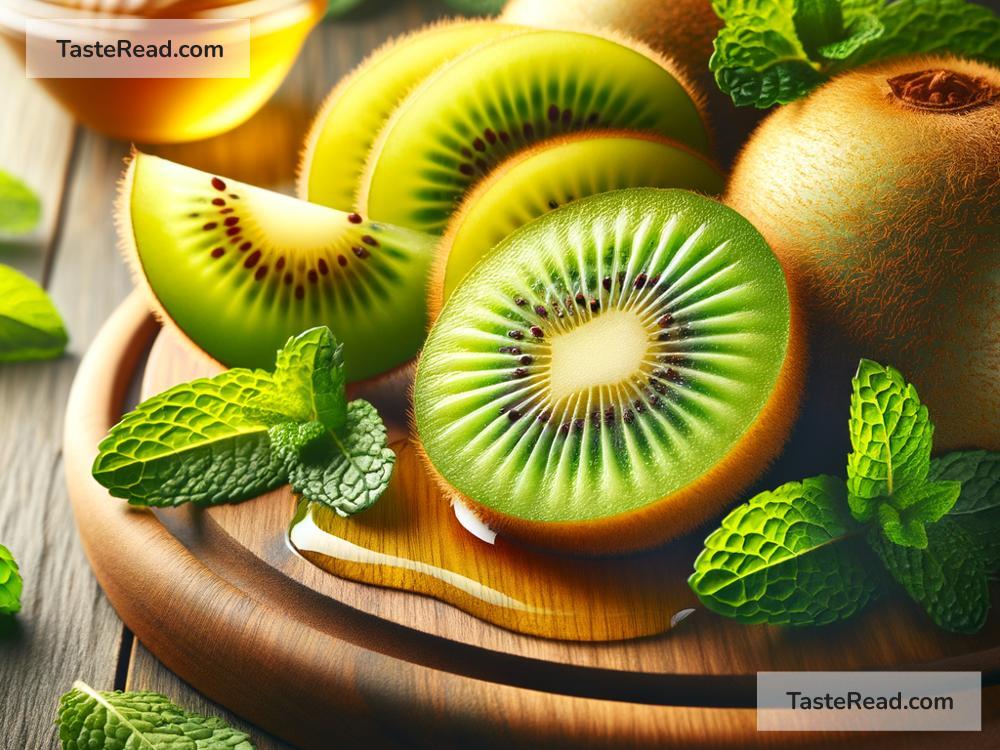Why Fruits Like Kiwis Have a Tangy-Sweet Balance
Fruits are nature’s candy. They come in all shapes, sizes, and flavors, adding color and taste to our meals. One fruit that stands out is the kiwi. With its fuzzy brown skin, vibrant green insides, and tiny black seeds, kiwis pack a punch of flavor that’s both tangy and sweet. But why do kiwis—and other fruits—have this unique taste balance? Let’s explore the science and magic behind it in simple terms.
A Quick Look at Kiwi’s Flavor
If you’ve ever tasted a kiwi, you know it’s not just sweet like sugar or tangy like a lemon—it’s a mix of both. One moment your tongue picks up its tangy zing, and the next, you’re enjoying its subtle natural sweetness. This dynamic flavor makes kiwis popular in smoothies, salads, and desserts. But where do these flavors come from?
The Role of Sugars and Acids
The tangy-sweet balance in kiwis comes down to two main components: sugars and acids.
-
Sugars – Sugars are responsible for the sweet taste in fruits. As fruits ripen, they produce more sugars, like glucose and fructose. These sugars develop through a natural process as the fruit grows and matures, making the kiwi taste sweeter over time.
-
Acids – Acids give fruits their tangy or sour taste. In kiwis, the main acid is called ascorbic acid, which is actually Vitamin C (great for your immune system!). Other acids, like citric acid, also play a role. These acids make your taste buds tingle, giving kiwis their signature zesty flavor.
The balance between sweetness and tanginess depends on how much sugar and acid the fruit has. When both are present in just the right amount, you get that perfect mix of zing and sweetness that makes your mouth water.
Why Do Fruits Like Kiwis Have This Balance?
You might wonder why fruits go through all this effort to create such delicious flavors. Believe it or not, it has a lot to do with nature. Here’s why this balance exists:
-
Attracting Animals (and Humans)
Fruits are a part of a plant’s life cycle. They carry seeds that need to spread to grow new plants. To attract animals who will eat the fruit and spread these seeds, plants evolved to make fruits delicious. A tangy-sweet flavor is appealing to many creatures, including us humans! -
Sign of Ripeness
When a kiwi ripens, it undergoes chemical changes. Acidity drops slightly, while sugars increase. This is why ripe kiwis taste sweeter and less sour than unripe ones. The tangy-sweet balance often signals to animals that the fruit is ready to eat. -
Preservation
Acids in fruits like kiwis also help preserve them. Acid deters bacteria and mold, keeping the fruit fresh for longer. That means the tangy taste isn’t just about flavor—it’s also helping the fruit survive!
Other Fruits with Tangy-Sweet Flavors
Kiwis aren’t the only fruit with this magical balance. Many fruits have a mix of sweetness and tang:
- Oranges – Similar to kiwis, oranges offer a refreshing burst of Vitamin C along with natural sugars.
- Pineapple – This tropical fruit is sweet and sour, thanks to its high acid and sugar content.
- Strawberries – Though milder, strawberries have both acidity and sweetness for a balanced taste.
- Apples – Depending on the type, apples can lean towards tangy (Granny Smith) or sweet (Honeycrisp).
The Ripeness Factor
The tangy-sweet flavor of fruits isn’t constant—it changes as the fruit ripens. Think of a green kiwi versus a fully ripe golden kiwi. An unripe kiwi has more acid and less sugar, making it more tangy than sweet. As it ripens, it develops sugars through a process called respiration. Sugar content rises, acidity drops slightly, and the flavor transitions to a sweeter profile while still keeping some zing.
If you ever find kiwis too tangy, try letting them sit at room temperature for a few days. This softens the fruit and boosts its sweetness.
Why the Tangy-Sweet Balance Matters
The balance of sweetness and tanginess isn’t just a treat for our taste buds—it’s good for health, too. Sweetness gives us quick energy, while acids, especially Vitamin C, help our immune system stay strong. Kiwis, in particular, are considered a “superfruit” because they’re packed with nutrients like fiber, potassium, and antioxidants.
Fun Facts About Kiwis
- Origin – Kiwis originally came from China and were called “Chinese gooseberries” before being named after New Zealand’s national bird, the kiwi.
- Golden Kiwi – There’s a variety of kiwi that’s less tangy and sweeter. It has yellow flesh instead of green and is just as nutritious!
- Tiny Seeds – The small black seeds inside kiwis are edible and rich in nutrients like Omega-3 fatty acids.
Final Thoughts
The tangy-sweet balance in kiwis is the result of nature’s perfect chemistry. Sugars bring sweetness, acids add tanginess, and together they create a flavor explosion that keeps us coming back for more. Whether you enjoy kiwis on their own, in a fruit salad, or blended into a smoothie, you’re experiencing a taste designed by nature not just to please your palate but also to help plants grow and thrive.
So the next time you bite into a juicy kiwi, remember—it’s not just delicious, it’s a masterpiece of balance between sweet and tangy!


